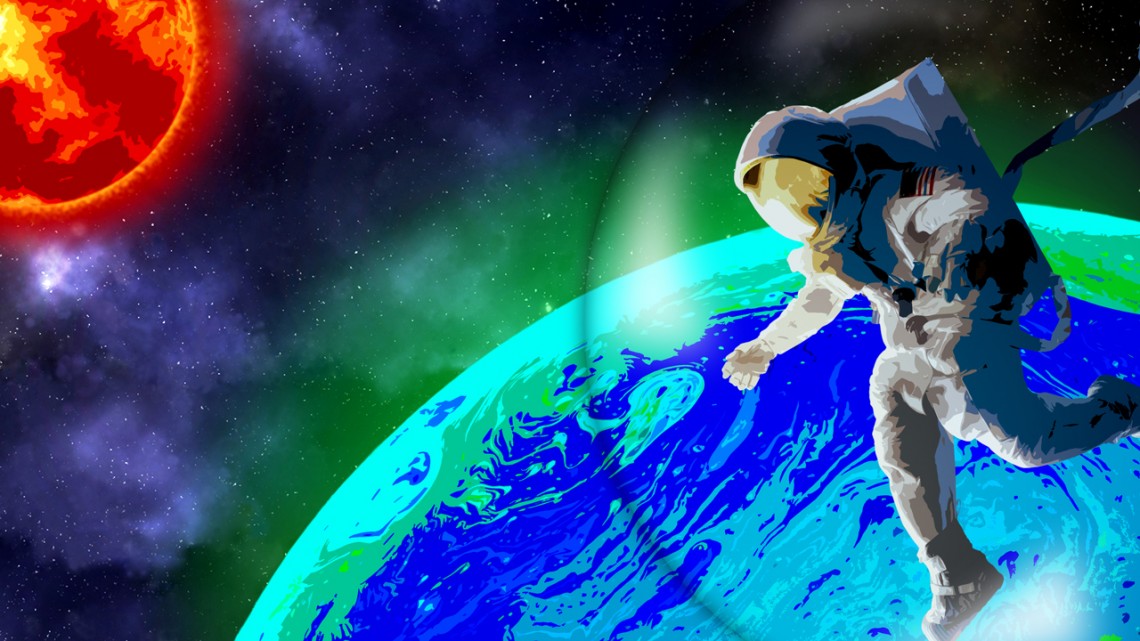Glowing Aliens Could Turn Harsh UV Radiation into Beautiful Radiance

Life on alien planets may produce a protective glow to buffer the dangerous flares of nearby stars.
Stars constantly douse their planets with harsh ultraviolet radiation flares, which could harm any life on a planet's surface. However, some forms of life may have developed a defense against these powerful bursts: a protective glow known as biofluorescence.
"On Earth, there are some undersea coral that use biofluorescence to render the sun's harmful ultraviolet radiation into harmless visible wavelengths, creating a beautiful radiance," Lisa Kaltenegger, an associate professor of astronomy and director of the Carl Sagan Institute at Cornell University, said in a statement. "Maybe such life-forms can exist on other worlds too, leaving us a telltale sign to spot them."
Related: 7 Theories on the Origin of Life
Using emission characteristics of common coral fluorescent pigments from Earth, researchers created model spectra for planets orbiting red dwarf stars. Also known as M dwarfs, these stars are small and dim but pack a punch, with frequent emissions of ultraviolet flares.
Through the process of photoprotective biofluorescence, ultraviolet rays are absorbed and converted into wavelengths that are longer and safer, which could help life survive on exoplanets that orbit close to red dwarfs, the researchers said.
This means that when a flare from a star hits a planet, it may trigger a temporary fluorescent glow from defensive life-forms, and, in turn, reveal an otherwise-hidden biosphere, the statement said.
Breaking space news, the latest updates on rocket launches, skywatching events and more!
In addition, biofluorescence leaves behind a specific signature, which the next generation of Earth- or space-based telescopes may be able to detect, the researchers said.
"This is a completely novel way to search for life in the universe," Jack O'Malley-James, lead author and researcher at the Carl Sagan Institute, said in the statement. "Just imagine an alien world glowing softly in a powerful telescope."
The findings were published Tuesday (Aug. 13) in the Monthly Notices of the Royal Astronomical Society journal.
- Life May Be Common in the Milky Way, Thanks to Comet Swapping
- Could Life on Earth Have Come from Another Star System?
- For Close-Knit Planets, Sharing Life Could Be Easy
Follow Samantha Mathewson @Sam_Ashley13. Follow us on Twitter @Spacedotcom and on Facebook.

Samantha Mathewson joined Space.com as an intern in the summer of 2016. She received a B.A. in Journalism and Environmental Science at the University of New Haven, in Connecticut. Previously, her work has been published in Nature World News. When not writing or reading about science, Samantha enjoys traveling to new places and taking photos! You can follow her on Twitter @Sam_Ashley13.
